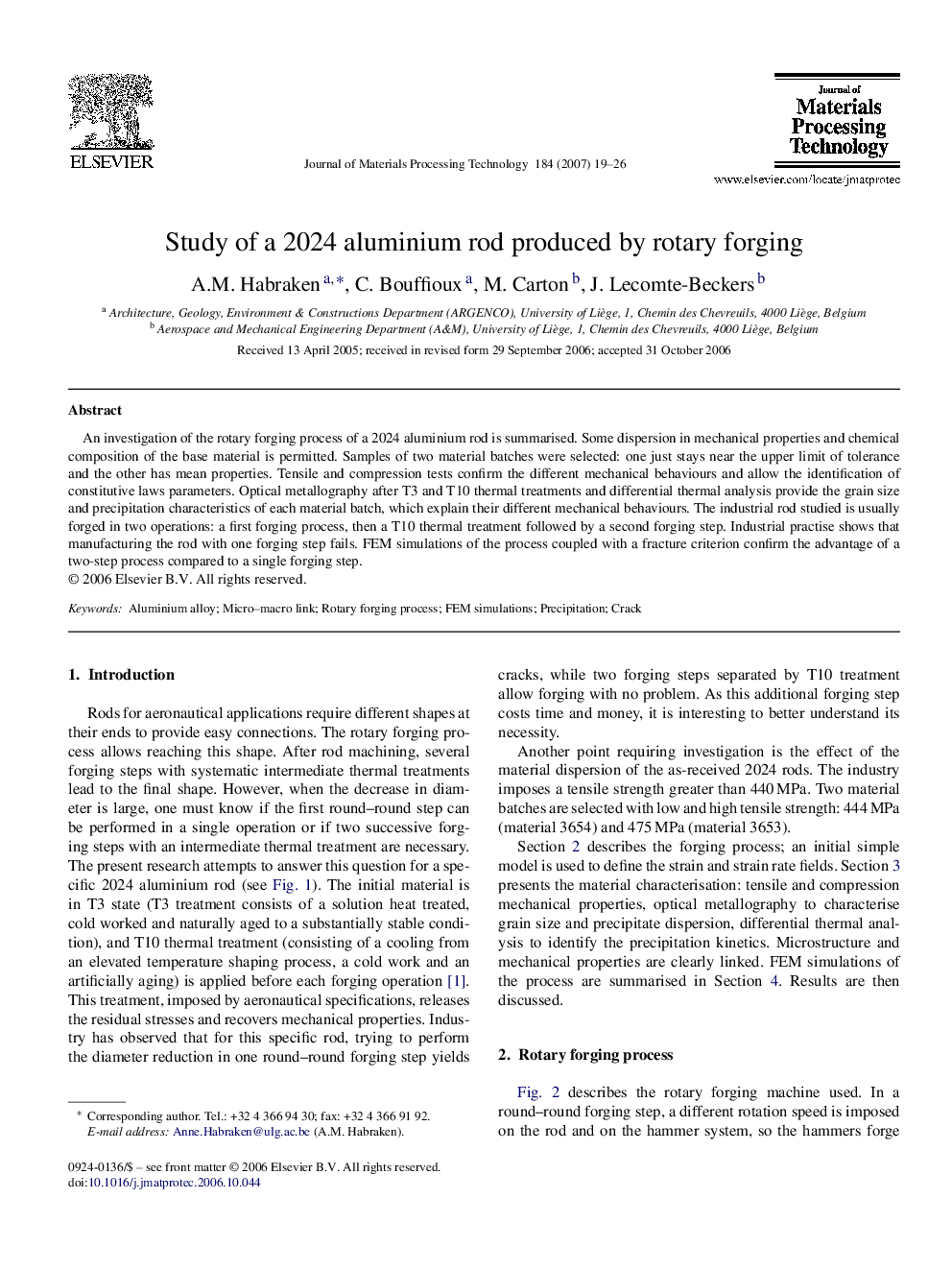| Article ID | Journal | Published Year | Pages | File Type |
|---|---|---|---|---|
| 798816 | Journal of Materials Processing Technology | 2007 | 8 Pages |
An investigation of the rotary forging process of a 2024 aluminium rod is summarised. Some dispersion in mechanical properties and chemical composition of the base material is permitted. Samples of two material batches were selected: one just stays near the upper limit of tolerance and the other has mean properties. Tensile and compression tests confirm the different mechanical behaviours and allow the identification of constitutive laws parameters. Optical metallography after T3 and T10 thermal treatments and differential thermal analysis provide the grain size and precipitation characteristics of each material batch, which explain their different mechanical behaviours. The industrial rod studied is usually forged in two operations: a first forging process, then a T10 thermal treatment followed by a second forging step. Industrial practise shows that manufacturing the rod with one forging step fails. FEM simulations of the process coupled with a fracture criterion confirm the advantage of a two-step process compared to a single forging step.
